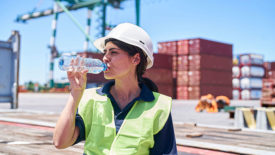Workplace Health
Cover Story
8 steps to a winning heat safety plan
Together, 30 experts create actionable solutions to reduce injuries
July 12, 2022
OSHA announces $11.7M in funding for safety, health training
Deadline to apply for grants is August 1
June 30, 2022
Never miss the latest news and trends driving the safety industry
eNewsletter | Website | eMagazine
JOIN TODAYCopyright ©2024. All Rights Reserved BNP Media.
Design, CMS, Hosting & Web Development :: ePublishing












